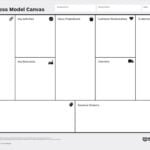
In today’s fast-paced world, turning ideas into tangible products has become a paramount challenge for businesses. This is where rapid prototyping (RP), or the swift creation of prototypes, plays a crucial role. The rapid prototyping process enables companies to transform their concepts into physical prototypes at an astonishing speed, accelerating innovation and reducing time to market.
With rapid prototyping, companies can now bring their ideas to life in a matter of days, rather than weeks or months. By utilizing advanced technologies such as 3D printing, CNC machining, or injection molding, companies can quickly create functional prototypes, allowing them to assess their designs, identify potential defects, and make necessary improvements before proceeding to production.
RP not only saves time but also cuts costs. By identifying design flaws early on, companies can avoid costly errors during production. Moreover, the ability to see and touch a physical prototype helps stakeholders better understand the product, leading to more informed decision-making and ultimately a product that meets customer expectations.
Rapid prototyping has garnered attention in the prototyping community due to its ability to reduce product development lead times (Maurya et al., 2020). In this article, we will delve into the world of rapid prototyping, exploring its benefits, processes, and real-world applications. Discover how this transformative technology is revolutionizing the way businesses bring their ideas to life, turning concepts into reality.
What is Rapid Prototyping?
The development of rapid prototyping technology is the most significant innovation in the manufacturing field (Maurya et al., 2020). The term rapid prototyping is used to describe a process of swiftly creating a system or representation of parts before the final launch or marketing (Gibson et al., 2021), utilizing three-dimensional computer-aided design (CAD) data.
Dwivedi et al. (2023) emphasize that rapid prototyping is an interdisciplinary approach in the field of manufacturing that has the potential to bring about a revolutionary change in prototyping, altering the essence of product development, tools, and manufacturing (Gurr et al., 2016).
It is essential to note that the concept of rapid prototyping has been implemented in sectors such as education.
Importance of Rapid Prototyping in Product Development
Rapid prototyping has revolutionized the way products are developed and innovated, providing companies with an invaluable tool to bring their ideas to life quickly and efficiently. The initial economic motivation for the development of rapid prototyping was to support product development by providing the ability to create physical models for the validation of new designs quickly and at a low cost (Gurr et al., 2016).
Traditionally, the product development process involved several stages, including concept development, design, and tooling, which could take months or even years to complete. However, with rapid prototyping, companies can significantly compress this timeline, allowing for faster iterations and a more agile development process.
One of the key benefits of RP is the ability to test and validate designs before committing to large-scale production. By creating physical prototypes, companies can assess the functionality, aesthetics, and usability of a product, making necessary adjustments and improvements along the way. This iterative approach not only enhances the overall quality of the final product but also reduces the risk of costly design changes during production.
For startups, rapid prototyping allows entrepreneurs to initiate the product development phase and only seek external funding at a later stage when the product has matured enough (Rayna and Striukova, 2021). This enables entrepreneurs to present a more mature product to potential investors.
Moreover, RP enables companies to gather valuable feedback in the early stages of the development process. By involving stakeholders and end-users in the evaluation of prototypes, companies can gain insights into customer preferences, identify potential issues, and make informed decisions based on real-world feedback. This collaborative approach fosters innovation, ensuring that the final product meets the needs and expectations of the target market.
Methods of Rapid Prototyping
Rapid prototyping encompasses a variety of techniques and technologies that enable the rapid and cost-effective production of physical prototypes. Each technique has its advantages and is suitable for different applications. Here are some of the most commonly used rapid prototyping techniques:
3D Printing
Also known as additive manufacturing, 3D printing is a widely used rapid prototyping technique that involves building objects layer by layer using a digital model. This technique offers great flexibility in terms of materials, allowing companies to prototype with various properties such as strength, flexibility, or transparency.
CNC Machining
Computer Numerical Control (CNC) machining involves using computer-controlled machines to remove material from a solid block, creating a prototype with high precision and accuracy. CNC machining is ideal for producing prototypes with complex geometries or for materials not compatible with 3D printing.
Injection Molding
Injection molding is a mass-production technique that can also be used for rapid prototyping. It involves injecting molten material into a mold, which then solidifies to take the desired shape. While injection molding requires tooling, it offers the advantage of producing prototypes that closely resemble the final product in terms of material properties and surface finish.
These techniques are just a few examples of the wide range of rapid prototyping options available to companies today. The choice of technique depends on factors such as the complexity of the design, desired material properties, and the required production volume.
Advantages of Rapid Prototyping
Rapid prototyping offers numerous advantages that can significantly impact a company’s product development process. Here are some key benefits:
More Iterations and Faster Time to Market
RP allows companies to compress the product development timeline, enabling greater speed. By reducing the time it takes to transform an idea into a physical prototype, companies can gain a competitive advantage by bringing innovative products to market ahead of competitors.
Cost Savings
Rapid prototyping helps companies save costs by identifying design flaws early on, avoiding costly errors during production. By making necessary improvements and refinements in the prototype creation stage, companies can steer clear of expensive design changes later in the development process.
Enhanced Collaboration
The ability to create physical prototypes facilitates better collaboration among stakeholders and end-users. With a tangible representation of the product, teams can better communicate their ideas, gather feedback, and make informed decisions aligned with customer expectations.
Flexibility and Iteration
RP allows for quick iterations and modifications of designs. This flexibility enables companies to explore different design options, assess their feasibility, and make necessary adjustments without the limitations associated with traditional manufacturing methods.
Reduced Risk
By testing and validating designs before committing to large-scale production, companies can reduce the risk of market failures. Rapid prototyping helps identify potential issues early on, enabling improvements and refinements that increase the likelihood of a successful product launch.
Rapid Prototyping Process
The rapid prototyping process typically involves several key steps, each contributing to the successful transformation of an idea into a physical prototype. While specific steps may vary depending on the chosen technique and design complexity, the following outline provides a general description of the rapid prototyping process:
Concept Development
The first step in the rapid prototyping process is defining the concept and establishing design requirements. This involves generating ideas, conducting market research, and understanding customer needs and preferences.
Design
Once the concept is defined, the next step is creating a digital representation of the product using computer-aided design (CAD) software. The design should include all necessary details, dimensions, and features required for the prototype.
Prototyping
Based on the digital design, the physical prototype is created using the chosen rapid prototyping technique. This step may involve 3D printing, CNC machining, or injection molding, depending on design requirements and limitations.
Testing and Evaluation
Once the prototype is created, it undergoes testing and evaluation to ensure it meets the desired functionality, aesthetics, and performance. This step involves various tests, such as stress tests, usability tests, or market research, to gather feedback and identify necessary improvements.
Refinement and Iteration
Based on feedback collected during testing and evaluation, the design is refined and iterated. This may involve adjustments to dimensions, materials, or features of the prototype to address identified issues or enhance performance.
Finalization
Once the prototype meets all desired criteria, it is finalized for production. This may involve additional steps such as surface finishing, assembly, or packaging, depending on the specific product requirements.
By following these steps, companies can effectively navigate the RP process, ensuring a smooth transition from concept to reality.
Tools and Software for Rapid Prototyping
To facilitate the rapid prototyping process, companies can leverage various tools and software that streamline design and prototype production. These tools not only simplify digital design creation but also enable efficient communication and collaboration among team members. Below are some common tools and software used for rapid prototyping:
- Computer-Aided Design (CAD) Software: CAD software allows designers to create detailed digital models of their prototypes. These software tools offer a variety of functions, including modeling, simulation, and 3D analysis capabilities, enabling designers to iterate designs and test different scenarios.
- 3D Printing Software: 3D printing software is specifically designed to prepare digital designs for 3D printing. These tools help optimize designs for printing, ensure proper support structures, and generate the necessary machine code for the 3D printer.
- Collaboration and Project Management Tools: Collaboration tools, such as project management software or cloud-based platforms, help streamline communication and collaboration among team members. These tools facilitate file sharing, version control, and real-time collaboration, ensuring smooth coordination throughout the rapid prototyping process.
- Simulation and Analysis Software: Simulation and analysis software allows designers to simulate the behavior of their prototypes under different conditions. These tools help identify potential issues, optimize designs, and ensure the final product meets desired performance requirements.
By utilizing these tools and software, companies can enhance their rapid prototyping capabilities, streamline their workflow, and improve overall efficiency in the product development process.
Common Challenges in Rapid Prototyping and How to Overcome Them
While rapid prototyping offers numerous benefits, it is not without its challenges. Companies must be aware of these challenges and take proactive measures to overcome them. Below are some common challenges in RP and strategies to address them:
Design Complexity
Complex designs can pose challenges in terms of feasibility and production cost. To overcome this challenge, companies should involve engineers and manufacturing experts in the design process to ensure the effective translation of the design into a physical prototype.
Material Selection
Choosing the right material for the prototype is crucial for achieving the desired functionality and performance. Companies should consider factors such as material properties, compatibility with the chosen rapid prototyping technique, and cost when selecting materials.
Time Constraints
RP requires quick turnaround times, and meeting tight deadlines can be a challenge. To address this, companies should prioritize tasks, optimize workflow, and leverage automation and digital tools to expedite the rapid prototyping process.
Budgetary Limitations
Rapid prototyping can be costly, especially when using advanced technologies or producing multiple iterations. To manage costs, companies should carefully assess the value and benefits of each prototype iteration and focus on critical aspects of the design.
Integration with Traditional Manufacturing
In some cases, RP needs to integrate with traditional manufacturing processes for large-scale production. This integration can present challenges in terms of tools, manufacturing techniques, and scalability. Companies should closely collaborate with manufacturing partners to ensure a smooth transition from prototyping to production.
By proactively addressing these challenges, companies can maximize the benefits of rapid prototyping and overcome potential obstacles in the product development process.
Examples of Rapid Prototyping Usage
Rapid prototyping has played a crucial role in the development of numerous successful products across various industries. Below are some case studies highlighting the transformative impact of RP:
- Tesla Motors: Tesla, a leading electric vehicle manufacturer, extensively employs rapid prototyping in its product development process. By rapidly iterating designs and creating physical prototypes, Tesla has been able to bring innovative electric vehicles to the market quickly, revolutionizing the automotive industry.
- Nike: Nike, a global leader in footwear and sportswear, has embraced rapid prototyping to design and test new shoe models. Leveraging 3D printing technology, Nike has created functional prototypes, tested different material combinations, and gathered valuable feedback from athletes, leading to the development of high-performance footwear.
- IDEO: IDEO, a renowned design consultancy, has successfully utilized rapid prototyping in various projects. By employing a human-centered design approach and creating physical prototypes in the early stages of the design process, IDEO has developed innovative products that resonate with users and meet their needs.
These case studies demonstrate the power of RP to drive innovation, reduce time to market, and create products that push boundaries.
Industries Benefiting from Rapid Prototyping
Rapid prototyping has a wide range of applications across industries, providing companies with a competitive edge in product development. Blasiak et al. (2021) report that RP of physical models is increasingly important in applications ranging from industrial to architectural, archaeological, and even in medicine (e.g., implantology, prosthetics, forensic medicine). Meanwhile, Mohanavel et al. (2021) highlight that rapid prototyping is a time-saving process in the aerospace and automotive industries.
Here are some industries that can benefit from rapid prototyping:
Automotive
RP allows car manufacturers to design and test new vehicle models, components, and features quickly. This technology facilitates the development of safer, more efficient, and technologically advanced vehicles.
Consumer Electronics
The consumer electronics industry can leverage rapid prototyping to design and test new electronic devices, such as smartphones, wearables, or appliances. This enables companies to launch innovative products to market more quickly and stay ahead of the competition.
Healthcare
Rapid prototyping is revolutionizing the healthcare industry by enabling the development of custom medical devices, prosthetics, and implants. This technology allows for personalized solutions that improve patient outcomes and quality of life. Tranquillo et al. (2023) reports that some medical products, such as dental implants, hearing aids, stents, and parts of prosthetics, are already being created using rapid prototyping.
Architecture and Construction
Rapid prototyping allows architects and construction professionals to create detailed scale models, test building designs, and visualize spaces. This technology helps streamline the design process, improve communication with clients, and reduce construction errors.
Fashion and Design
Rapid prototyping is transforming the fashion and design industry by enabling designers to create 3D-printed garments, accessories, and jewelry. This technology allows for greater creativity, customization, and sustainability in the fashion world.
These are just a few examples of industries that can harness rapid prototyping to drive innovation, streamline product development, and stay at the forefront of today’s competitive market. However, the concept of rapid prototyping is also being applied in the educational field; Hong (2022) reports the use of rapid prototyping to design Korean-themed online public educational content on Korean medicine, while Kwaczala et al. (2021) reported a strong association between engineering self-efficacy and confidence in constructionist activities: rapid prototyping of low-fidelity artifacts and CAD model development based on individual design ideas in engineering students.
Conclusion
Rapid prototyping has revolutionized how companies bring their ideas to life, transforming concepts into tangible products at an unprecedented speed. With technological advancements and the growing adoption of rapid prototyping across all industrial sectors in the framework of Industry 4.0, the future looks promising for product innovation.
Rapid prototyping remains a developing area with many new manufacturing techniques, materials, finishing treatments, and applications emerging each month (Tranquillo et al., 2023). Thus, as companies strive to stay ahead in the fast-paced world, rapid prototyping will continue to play a fundamental role in accelerating the product development process, reducing costs, and enhancing overall product quality. By embracing rapid prototyping, companies can unleash their creativity, drive innovation, and turn concepts into reality, shaping the future of product development.
In conclusion, rapid prototyping is a transformative technology that allows companies to bring their ideas to life quickly and efficiently. By leveraging advanced techniques and tools, companies can accelerate innovation, reduce time to market, and create products that meet customer expectations. As rapid prototyping continues to evolve, companies adopting this technology will gain a competitive advantage in today’s dynamic market, shaping the future of product development and innovation.
References
Blasiak, Slawomir, Pawel Andrzej Laski, and Jakub Emanuel Takosoglu. 2021. “Rapid Prototyping of Pneumatic Directional Control Valves” Polymers 13, no. 9: 1458. https://doi.org/10.3390/polym13091458
Dwivedi Umesh K., Shashank Mishra, Vishal Parashar, Chapter 13 – Rapid prototyping, Editor(s): Kunal Pal, Sarika Verma, Pallab Datta, Ananya Barui, S.A.R. Hashmi, Avanish Kumar Srivastava, Advances in Biomedical Polymers and Composites, Elsevier, 2023, Pages 315-341, ISBN 9780323885249, https://doi.org/10.1016/B978-0-323-88524-9.00027-9.
Gibson, I., Rosen, D., Stucker, B., Khorasani, M. (2021). Introduction and Basic Principles. In: Additive Manufacturing Technologies. Springer, Cham. https://doi.org/10.1007/978-3-030-56127-7_1
Gurr M., R. Mülhaupt, Rapid Prototyping, Reference Module in Materials Science and Materials Engineering, Elsevier, 2016, ISBN 9780128035818, https://doi.org/10.1016/B978-0-12-803581-8.01477-6.
Hong, J. (2022). Designing Online Public Education Contents in Korean Medicine Using the Rapid-Prototyping Instructional Systems Design Model. 대한한의학회지, 43(4), 74-88.
Kwaczala, A. T., & Gettens, R., & Northrup, D. A. (2021, July), Using Rapid Prototyping to Realize Design: Mindset and Engineering Self-Efficacy Paper presented at 2021 ASEE Virtual Annual Conference Content Access, Virtual Conference. https://peer.asee.org/37997
Maurya, N. K., Rastogi, V., & Singh, P. (2020). An overview of mechanical properties and form error for rapid prototyping. CIRP Journal of Manufacturing Science and Technology, 29, 53-70.
Mohanavel, V., Ali, K. A., Ranganathan, K., Jeffrey, J. A., Ravikumar, M. M., & Rajkumar, S. (2021). The roles and applications of additive manufacturing in the aerospace and automobile sector. Materials Today: Proceedings, 47, 405-409.
Rayna, T., & Striukova, L. (2021). Assessing the effect of 3D printing technologies on entrepreneurship: An exploratory study. Technological Forecasting and Social Change, 164, 120483.
Tranquillo Joseph, Jay Goldberg, Robert Allen. 2023. Chapter 7 – Prototyping, Editor(s): Joseph Tranquillo, Jay Goldberg, Robert Allen, In Biomedical Engineering, Biomedical Engineering Design, Academic Press, 2023, Pages 197-234, ISBN 9780128164440, https://doi.org/10.1016/B978-0-12-816444-0.00007-9.
Editor and founder of “Innovar o Morir” (‘Innovate or Die’). Milthon holds a Master’s degree in Science and Innovation Management from the Polytechnic University of Valencia, with postgraduate diplomas in Business Innovation (UPV) and Market-Oriented Innovation Management (UPCH-Universitat Leipzig). He has practical experience in innovation management, having led the Fisheries Innovation Unit of the National Program for Innovation in Fisheries and Aquaculture (PNIPA) and worked as a consultant on open innovation diagnostics and technology watch. He firmly believes in the power of innovation and creativity as drivers of change and development.





